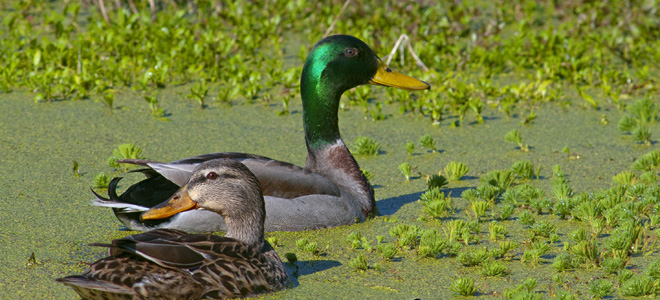
Widgeon show good increase; mallards, canvasbacks, pintails are steady
North Carolina waterfowl hunters can expect a good season in this winter based on the U.S. Fish and Wildlife Service’s annual report on duck populations that was released last Friday.
The preliminary estimate of the total beeding duck population in the “prairie pothole” area is 45.6 million birds, a 6-percent decrease from 2012 levels but still 33 percent above the long-term average.
Of individual species, American widgeon showed a 23-percent increase above 2012 levels, and mallards, pintails and canvasbacks matched 2012 levels. Blue-winged teal were 16 percent below 2012 estimates; green-winged teal were down 12 percent and scaup were down 20 percent.
Habitat conditions during the 2013 survey were generally improved or similar to last year due to above-average precipitation. Most of the Canadian portions of the survey area were rated as good to excellent – better than 2012 – but habitat conditions in the U.S. portion of the prairies were rated fair to poor, similar to 2012. Habitat conditions across most of the eastern survey area generally were good with the exception of Maine and the southern Maritimes, which were rated only as fair.
The surveys are conducted by the U.S. Fish and Wildlife Service and Canadian Wildlife Services’ Waterfowl Breeding Population and Habitat Survey, sampling more than 2 million square miles of waterfowl habitat across Alaska, the north-central and northeastern United States and south-central, eastern and northern Canada. Information is not included from surveys conducted by state or provincial agencies.
The annual survey guides the Service’s waterfowl conservation programs under authority of the 1918 Migratory Bird Treaty Act. The Service works in partnership with state biologists from the four flyways – the Atlantic, Mississippi, Central and Pacific – to establish regulatory frameworks for waterfowl hunting season lengths, dates and bag limits.



Be the first to comment